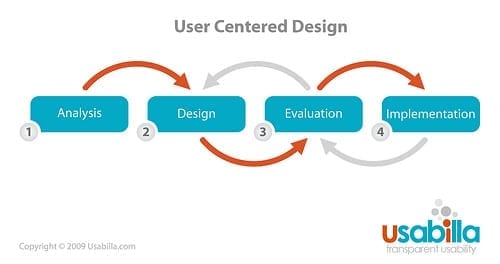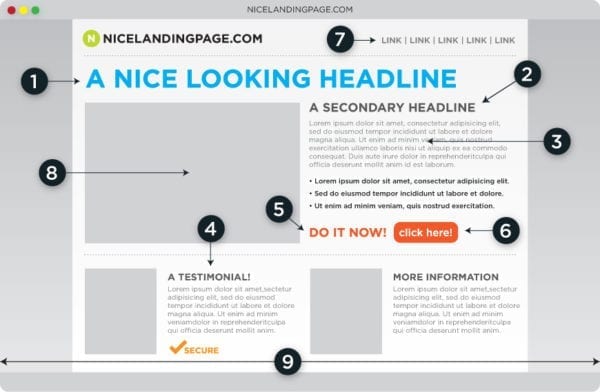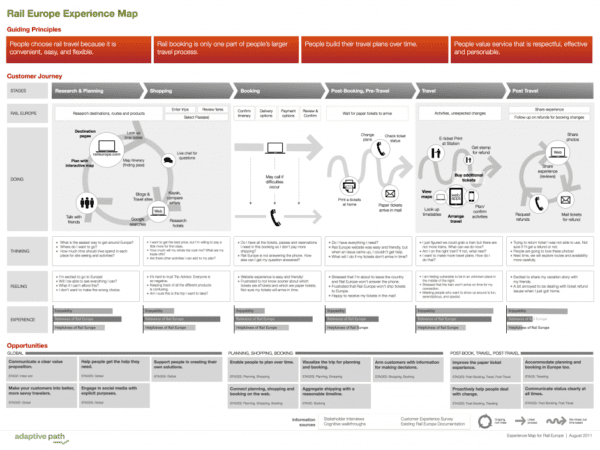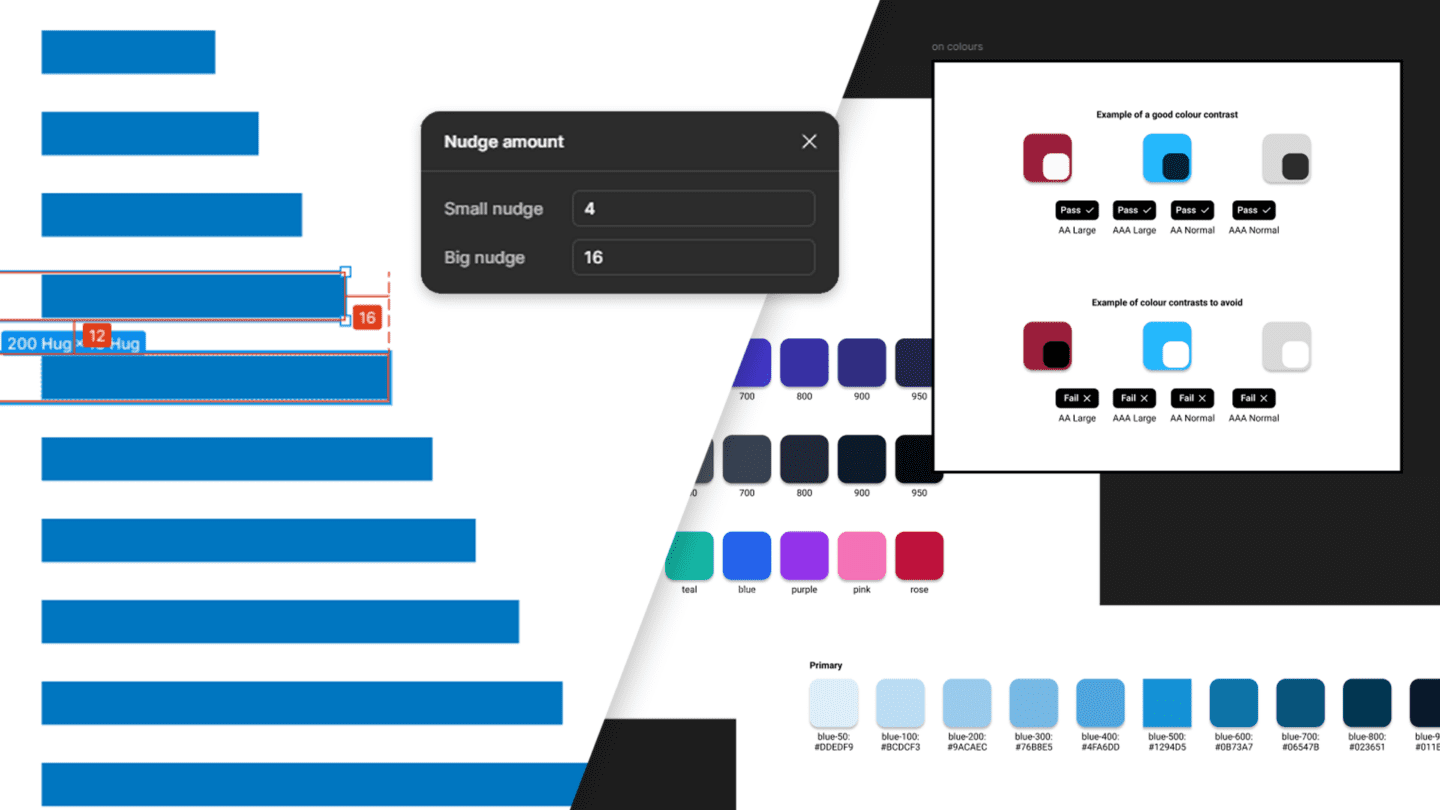In an ideal world we’d all like to launch a beautiful, fully complete and bug-free product or service on-time to a captive audience or prospective customers. But the truth is you’re more likely to launch a buggy product or service late to an audience that most likely consists of your family and friends.
Now addressing bugs and delays is beyond the scope of this post (sorry I couldn’t resist that scope dig!). But in terms of increasing the size of the initial audience you launch to; well you can do something about that. By taking a few simple steps to actively market your business prior to its launch.
One of the simplest and most efficient ways to do this is to develop and launch a landing page.
What is a landing page?
According to Unbounce, who should know a thing or two about them, a landing page is:
“In the purest sense, a landing page is any web page that a visitor can arrive at or “land” on. However, when discussing landing pages within the realm of marketing and advertising, it’s more common to refer to a landing page as being a standalone web page distinct from your main website that has been designed for a single focused objective.”
What type of landing page do you need?
In general, there are two types of landing page:
- Click through – the aim of these pages is to persuade a user to click through to another page.
- Lead generation – the aim of these pages is to capture customer data, normally a name and email address.
For the purpose of marketing an early-stage business we recommend the use of lead generation landing pages.

What are the benefits of a pre-launch landing page?
A well-crafted landing page will help you:
- Increase awareness of your brand
- Test interest in your concept
- Test how people react to the language you use to describe your concept
- Understand your customers better
- Prepare people for what’s to come (stimulate demand in advance of your actual launch)
- Start building your email contacts database
- Reduce the cost of building your email contacts database.
Adopt a user centred approach to develop successful landing pages

Before we define the elements required, let’s first identify what your landing page needs to explain to a first-time user of the website:
- What your product or service is?
- Why someone should use it (What problem does it solve? What are the benefits of using it?)
- Why should I sign-up for this now?
On top of this run through your target audience segments and try to identify the following factors:
- Their jobs to be done
- Their specific pain points or frustrations (with the status quo)
- Their reasons to say no
- Their reasons to yes
Do not short cut this process, it’s a false economy. Answering these questions effectively will be key to you developing a landing page that achieves the outcomes you wish.
Elements of an effective lead generation landing page
To maximise the success of your landing page (conversion rate) you will need to develop the following elements:
- Tagline
- Hero message (main headline)
- Supporting headline
- Positioning copy (what we do, who we do it for and why you should care)
- Summary of benefits (bullet point list)
- Brief explanation of key benefits/features
- Closing copy (that reaffirms the value you’ll provide)
- Social proof (logos/images, quotes and testimonials from customers)
- Trust marks (logos/images, media reviews, etc)
- Hero image or video
- Display contact details prominently, especially a phone number (the majority of people who see this will never use it. But the one’s that do could have a profound impact on your business)
- Call-to-action (to prompt people to complete the data capture form)
- Data capture form (to collect visitor information).
In addition to this, you may wish to:
- Add the ability to share your landing page (once the data form has been successfully submitted)
- Add a referral component (e.g. asking you to sign-up friends to get your beta access early). A great example and success story for this approach is Buffer.
- Provide links to further information, your social media profiles and a press kit.

Landing page tips
Content
Ensure your website’s content:
- Visually tell what the product does/show what the product does
- Do not overwhelm your visitor with information
- Use your prospective customers language
- Show enough of the product to stimulate desire but leave the end-user with the motivation that rather than waiting they want to try it now (to learn more)
- Makes limited use of outbound links.
Design
Ensure your design is:
- Focused on encouraging sign-ups
- Clear of any distracting elements
- Contains call to action(s) that are clearly distinguishable.
Other
- Only collect the information that you need (do you really need any more than an email address?)
- Incentivise sign-ups.
Tools for building a landing page
If you have an in-house developer it would be probably quicker to knock this up. However, if you’re dependent on external design and technical development skills then you should consider one of the following options:
LaunchRock
Unbounce
LeadPages
KickoffLabs
RocketStart
Lander
Going beyond the landing page: each and every touch point matters
People’s perception of your business won’t just be influenced by your landing page. Each and every point of interaction you have with a prospective customer will affect how they perceive you and your business.

So, don’t forget the importance of making sure each and every interaction you have with a prospective customer is a positive one. That’s why you should take the time to customise all of the automated feedback and notifications you provide customers.
For example, once someone has completed the sign-up form on your landing page you should send them an email to confirm their request and thank them for their interest. All automated emails like these should:
- Have a personable tone of voice
- Be sent from a real person
- Reaffirm why this email is being sent
- Reaffirm the messaging that is likely to have promoted the user to take the action that generated this email
- If appropriate, provide some relevant additional information
- End with an appropriate call to action
- Contain your contact details (an email isn’t enough, always include a phone number too).
Show you care
Once you’ve captured an email address, we’d always recommend that you try to:
- Respect the leads inbox (only send emails that are likely to add value)
- Qualify this lead further (are they a buyer or an influencer, what is their level of purchasing intent, what problems and pain points are they struggling to overcome, etc)
- Maintain this relationship (by reaching out from time to time, as well as providing the expected periodic updates).
The best way to achieve this is to personally communicate (and if at all possible, talk) to each and every person who signs up. Yes, this is labour intensive. But the insights it can lead to make this well worth the effort.
Need more help with landing pages?
Just get in touch and we can help you launch your business, or product, early.


